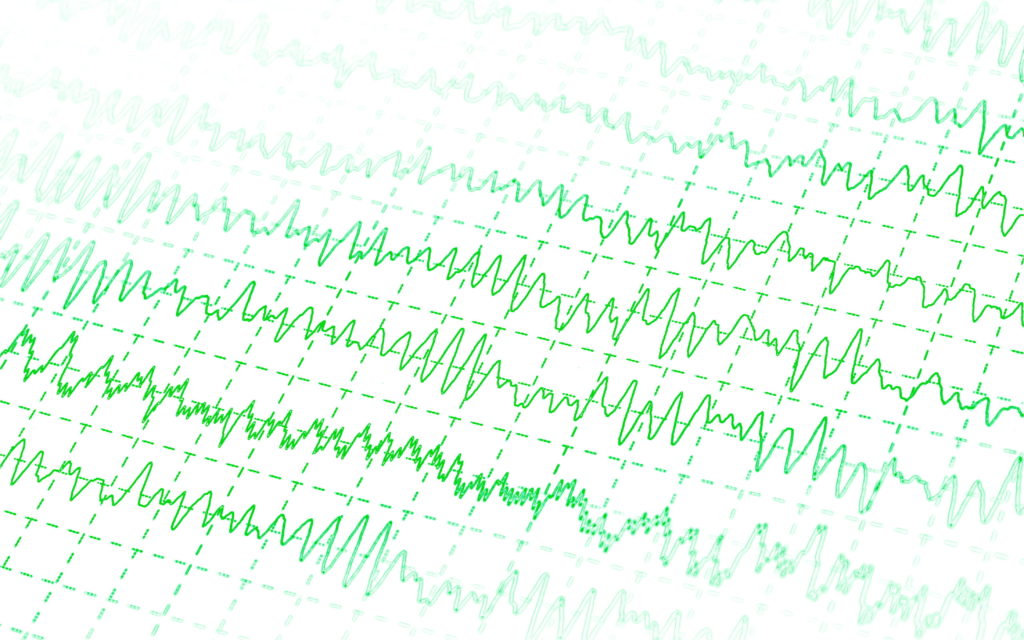Quick Hits
Daily brief research updates from the cognitive sciences

I outlined here how recent research has shown that the brains of highly creative individuals use different networks, and this also reminded me of separate piece of research from a few years ago that shows that creative brains have intriguing brain wave patterns.
In this study researchers around Caroline Di Bernardi Luft of the Queen Mary University of London found different brainwave patterns during creative thinking tasks in those who were more successful in these tasks.
What they found is that those who came up with more ideas in a creative thinking task “how many uses can you think of for a brick” or more distant relationships in associative chains e.g. cat > dog > animal > pet > human > people > family.
So what was happening in the brain?
Well first off it is known that when doing these tasks that obvious associations are the ones that jump to mind first. The brain is designed to build associations. In the case of the brick the most obvious is to build a wall or house. But creative people seem to suppress the obvious ideas searching and enabling more creative solutions.
And indeed, the researchers found that certain brainwaves, specifically alpha oscillations, in the right temporal area of the brain, increase when individuals need to suppress obvious or misleading associations in different creative tasks.
So, it seems that alpha brain waves in this part of the brain help creatives to suppress ideas. But is this just an association or does this actively help?
The researchers then looked to see if this was indeed causal. To do this they activated study participants brains while doing tasks with a technique called transcranial magnetic stimulation. This delivers a weak and safe electrical current to the brain and can stimulate various regions at various intensities.
And yes, when triggering alpha waves in the right temporal lobe participants could suppress the obvious ideas better.
So, one route to being creative is to suppress the obvious ideas that jump to mind. This is also triggered by brain waves patterns in the brain. But the good thing about this is that this can be actively trained though practising suppression or potential through neurofeedback techniques (structured brain wave training).
And that leaves me here trying to think of a non-obvious ending to this article.

Andy Habermacher
Andy is author of leading brains Review, Neuroleadership, and multiple other books. He has been intensively involved in writing and research into neuroleadership and is considered one of Europe’s leading experts. He is also a well-known public speaker speaking on the brain and human behaviour.
Andy is also a masters athlete (middle distance running) and competes regularly at international competitions (and holds a few national records in his age category).
Reference
Caroline Di Bernardi Luft, Ioanna Zioga, Nicholas M. Thompson, Michael J. Banissy, Joydeep Bhattacharya.
Right temporal alpha oscillations as a neural mechanism for inhibiting obvious associations.
Proceedings of the National Academy of Sciences, 2018; 201811465
DOI: 10.1073/pnas.1811465115
More Quick Hits
You Wake Up 100 Times Each Night – And That Helps Memory
Quick HitsDaily brief research updates from the cognitive sciences have written numerous posts and articles on sleep and the brain (review here), and the evidence is crystal clear. Good and consistent sleep is essential to all aspects of physical...
Only Three Factors Can Predict Mental Illness With 90% Accuracy
Quick HitsDaily brief research updates from the cognitive sciences here are multiple mental disorders that can afflict us human beings. And the assumption is that these are complex in nature and there are a multitude of paths to mental illness....
Cooperation Amongst Strangers Is On the Rise
Quick HitsDaily brief research updates from the cognitive sciences espite a belief in many that society is falling apart and becoming less caring and social this study proves the opposite. A study published by Yuan et al. with the American...
Brain Network For Social Attraction Identified
Quick HitsDaily brief research updates from the cognitive sciences umans do it. Birds do it. Fish do it. So do multitudes of other species. We flock together, come together, are attracted to our kind. We are a social species. But the question is...
How Creative Brains Function Differently
Quick HitsDaily brief research updates from the cognitive sciences an you learn creativity? Well, you can learn anything, and you can certainly learn to be more creative. But the big question is do those people high in creativity have brains that...
Experts Don’t Give the Best Advice – Just More of It
Quick HitsDaily brief research updates from the cognitive sciences k, that is a massive generalisation, and the research didn’t actually look at experts in the sense that we understand it. It is nevertheless insightful and does indeed match some of...






